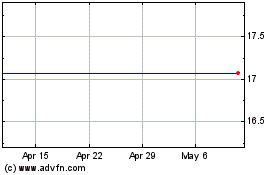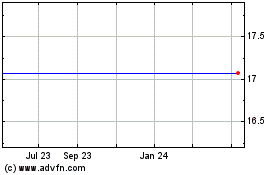The close of trading Friday marks the end of the road in the
marquee Standard & Poor's 500 Index for New York Times Co.
(NYT), Office Depot Inc. (ODP) and Eastman Kodak Co. (EK),
mirroring changes both in consumer behavior and the
marketplace.
The index aims to emulate the U.S. economy, which has largely
gone digital, pressuring more traditional industries like print
publishing, brick-and-mortar retailers and photography.
Taking the place of the companies will be Internet-traffic
service provider F5 Networks Inc. (FFIV), online-movie rental
service Netflix Inc. (NFLX) and gas and oil exploration company
Newfield Exploration Co. (NFX).
"If you look at who's going on and who's going off, it looks
more like a global change in how everyone does business," said
Morningstar analyst Joscelyn MacKay. "It kind of shows that new
technology is making inroads and some of the older technologies are
leaving."
Netflix has the most recognizable name of the three new
additions and its shares have more than tripled this year
alone.
"Netflix, with its new streaming product, really revolutionized
television," said Gabelli & Co. analyst Brett Harriss,
referring to the delivery of video online.
Meanwhile, F5, with the biggest market cap of the three, has
benefited from the overall growth of mobile traffic and cloud
computing. And Newfield, traditionally a natural-gas focused
company, has been shifting more toward lucrative oil production,
helping send its shares on a tear.
In a typical year, there are about 30 changes in the S&P
500, many of which are due to mergers and acquisitions, said
S&P's David Blitzer, chairman of the index committee. In one
such move, also after Friday's close, Cablevision Systems Corp.
(CVC) is replacing King Pharmaceuticals Inc. (KG), which is being
acquired by Pfizer Inc. (PFE).
But this year, there were fewer opportunities to make
merger-related moves, Blitzer said, adding there had only been 12
previous changes in 2010.
"Over the last two to three months, it's become clear that
unless we get a big pickup in M&A activity, that some changes
would be appropriate," he said.
While a company's market cap must be at least $3.5 billion to be
considered for inclusion in the 500, there isn't a set threshold
for removal. And unlike the Russell indexes, which are
reconstituted annually, there's no set schedule for changes.
The companies leaving the index Friday had market caps between
$1 billion and $3.5 billion as of Dec. 9 and are joining the MidCap
400. The new additions, meanwhile, are worth more than $7 billion,
more in line with the median market cap of the index at $10.9
billion.
Among Friday's changes is the removal of Kodak, which has been
part of the 500 since the index was first published in 1957. After
Friday, the number of original members in the index will fall to
73. Kodak shares, which traded above $90 in 1997, have steadily
declined along with its traditional film business.
A spokesman for the company, which was also a component of the
Dow Jones Industrial Average until 2004, called the S&P shift a
mere mathematical consequence of a change in market
capitalization.
Meanwhile, New York Times shares are essentially flat over their
26-year life in the index, despite a big run-up in the late 1990s
and early 2000s. Over the same period, the total market value of
the index has surged to $11.8 trillion from $1.2 trillion.
A representative for The New York Times declined to comment.
Howard Silverblatt, S&P's senior index analyst, noted the
deterioration in the publishing industry and said it no longer
needs the representation in the 500 that it did at one time, though
"it needs representation in the mid-cap area, which speaks to the
market value."
Coincidentally, Meredith Corp. (MDP), publisher of Ladies' Home
Journal and Better Homes and Gardens, is among the stocks remaining
in the index with the smallest market cap, according to FactSet
Research.
As for Office Depot, the office-supplies retailer entered the
500 in 1999, when its market cap was roughly $8.4 billion. But it
suffered during the recession amid high unemployment among
white-collar workers and competitive pressure.
An Office Depot spokesman said S&P's decision has no impact
on its long-term strategic plan, though it acknowledged moving from
one index to another could cause certain index funds to unload the
shares.
Indeed, there is often a decline in shares of companies that are
removed from the 500 as index managers rebalance their
portfolios.
Silverblatt estimates 11.4% of the shares of S&P 500
constituents are held by licensed index funds or managers, with
more emulating the index.
But some observers say the move could ultimately have a positive
effect on share prices. The companies will lose limelight leaving
the 500, said Cirrus Research's Satya Pradhuman; however, they may
take up greater market share in the smaller index depending on the
relative weights they take hold of.
For investors, S&P's Blitzer said the one thing to remember
is "this is not investment advice in any way, shape or form."
-By Caitlin Nish, Dow Jones Newswires; 212-416-2076;
caitlin.nish@dowjones.com
Newfield Exp Com (NYSE:NFX)
Historical Stock Chart
From Jul 2024 to Aug 2024

Newfield Exp Com (NYSE:NFX)
Historical Stock Chart
From Aug 2023 to Aug 2024
